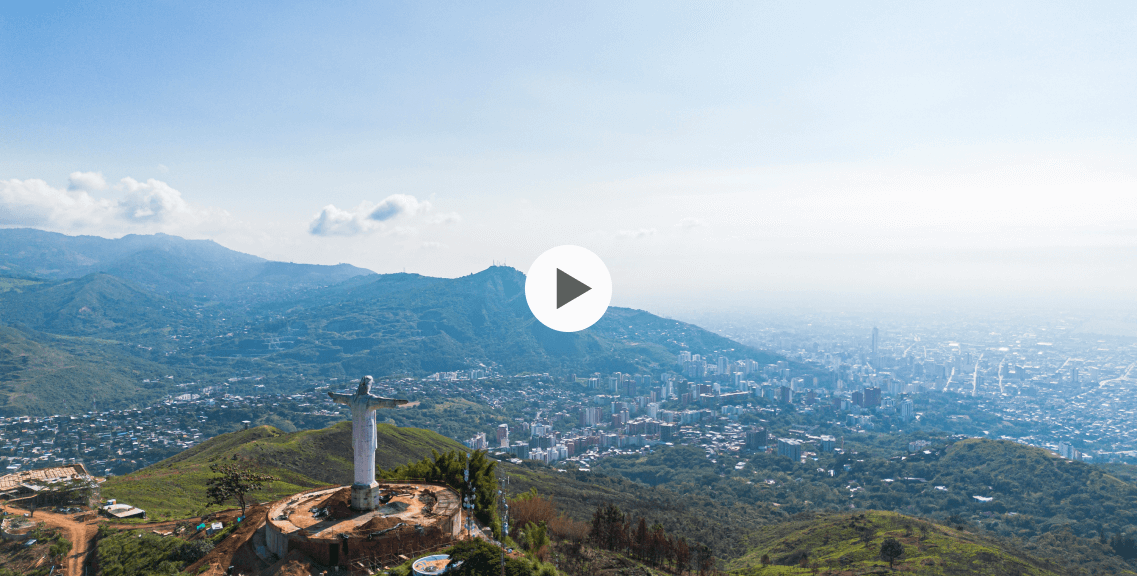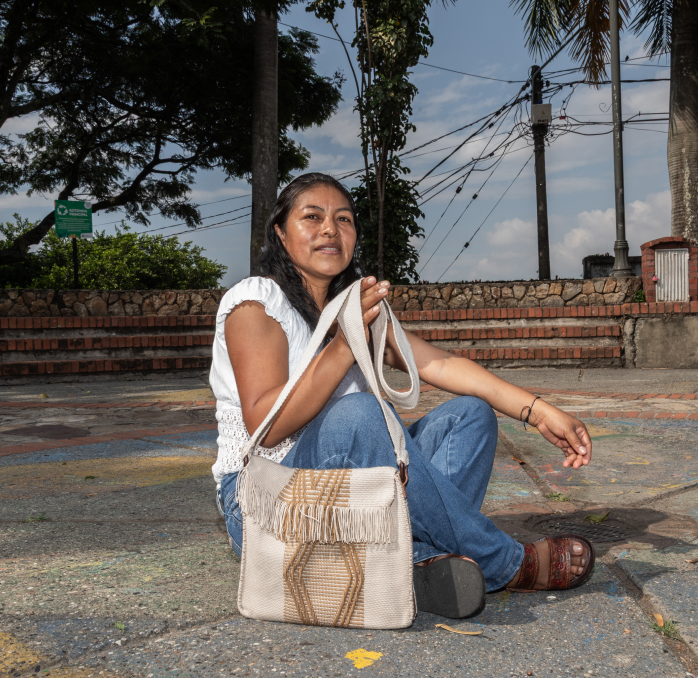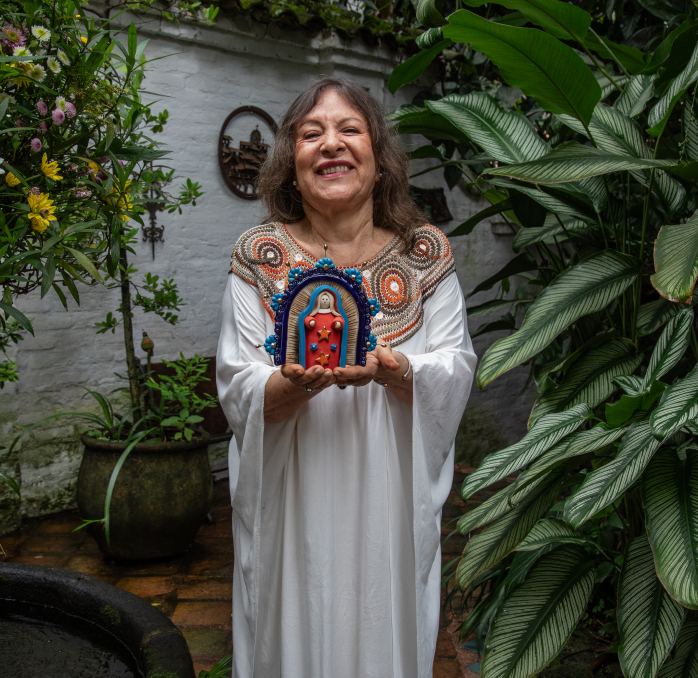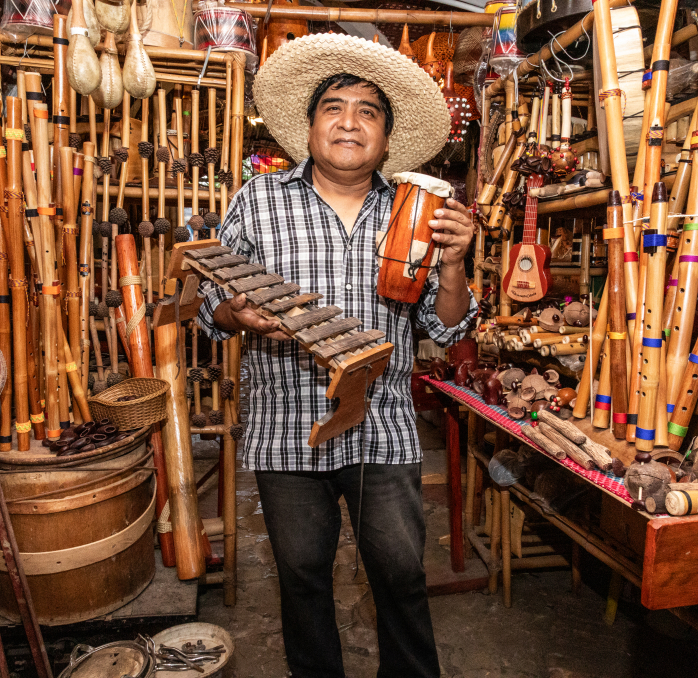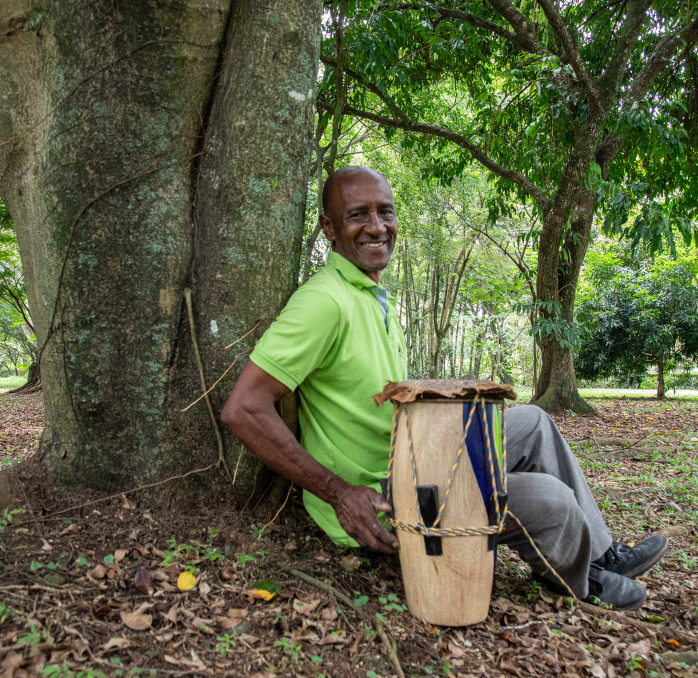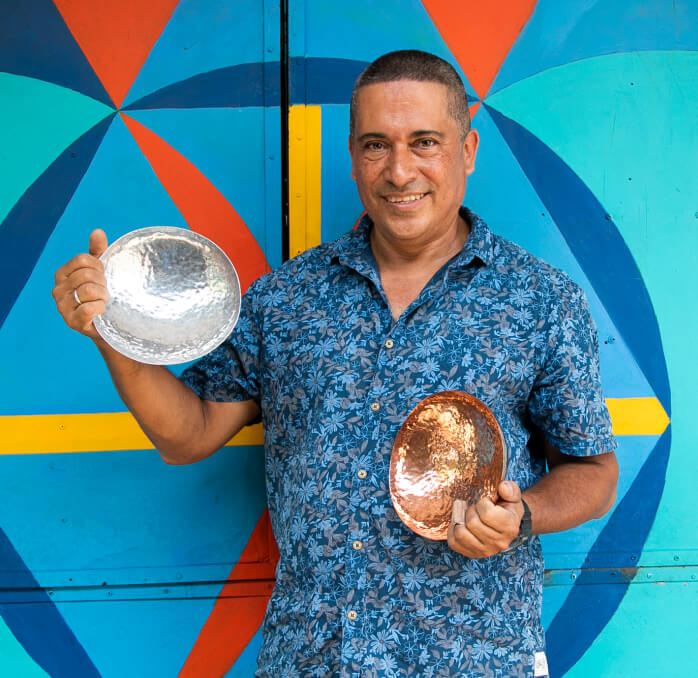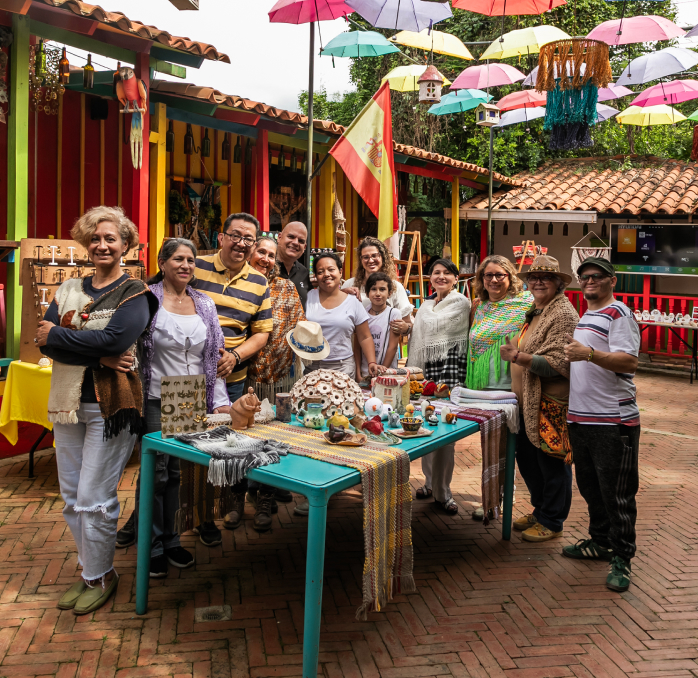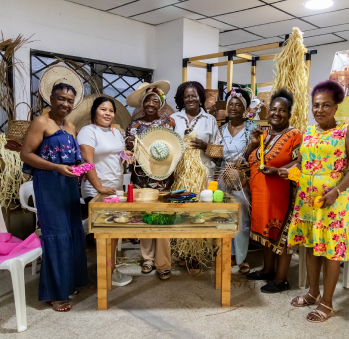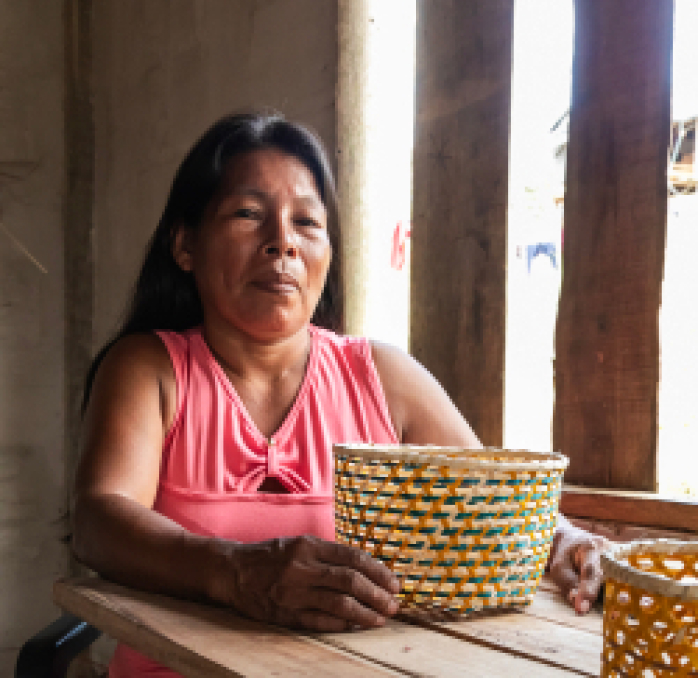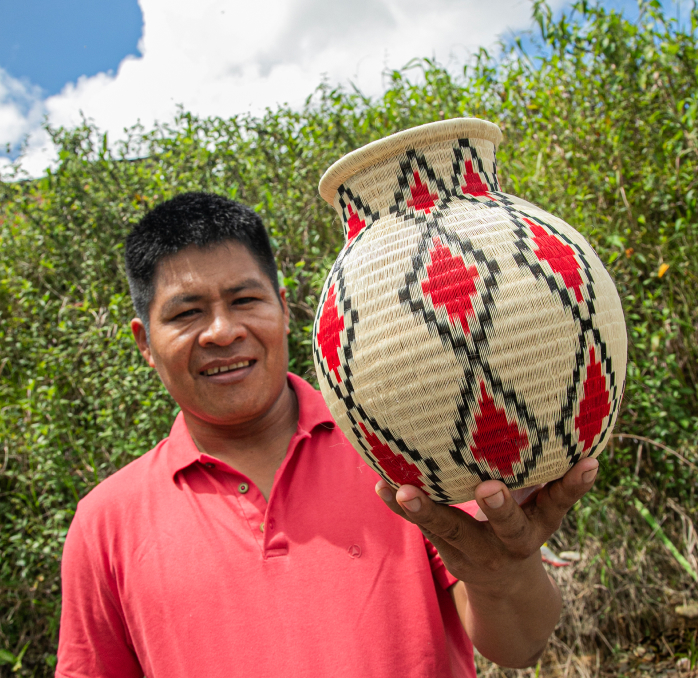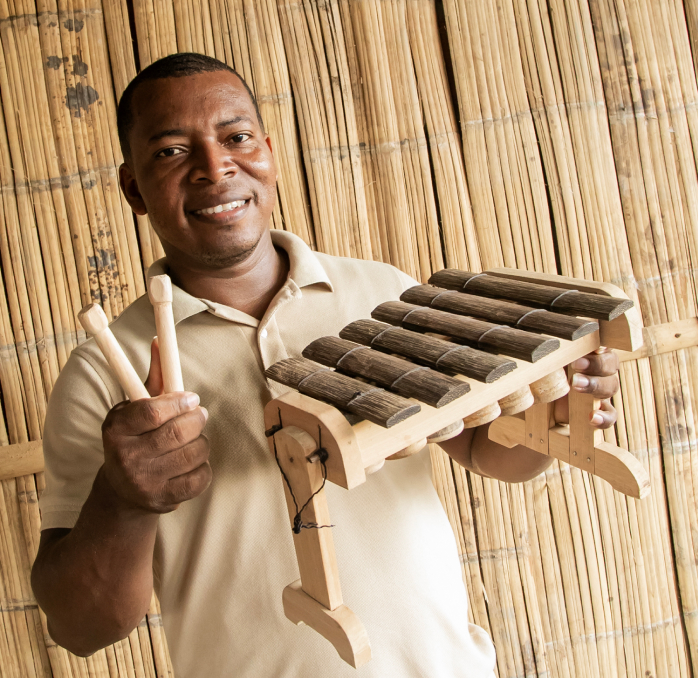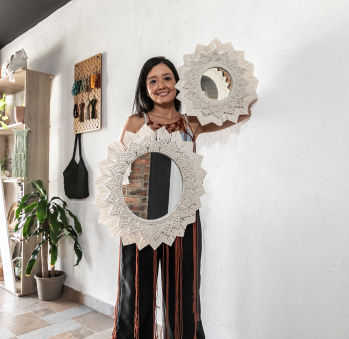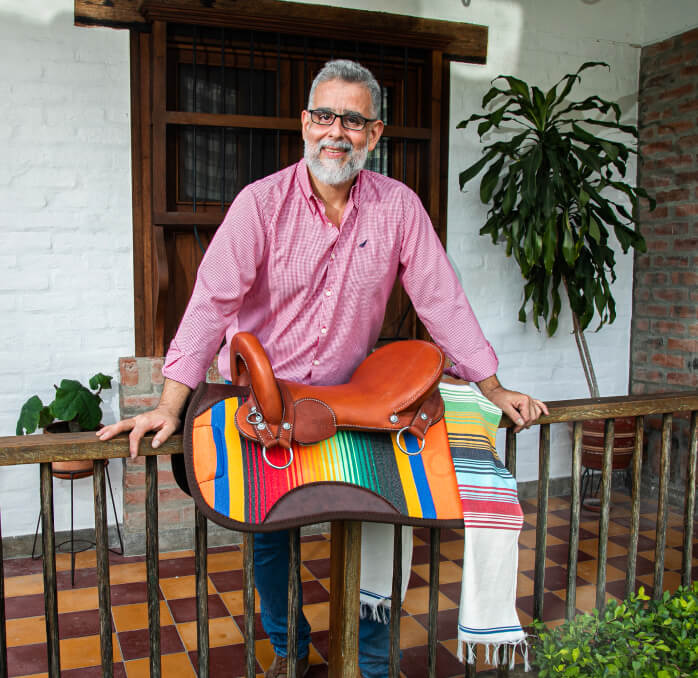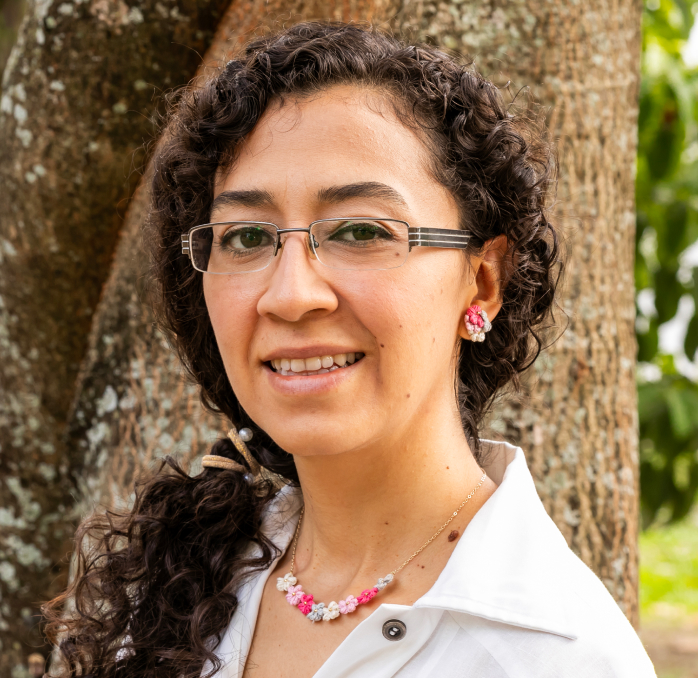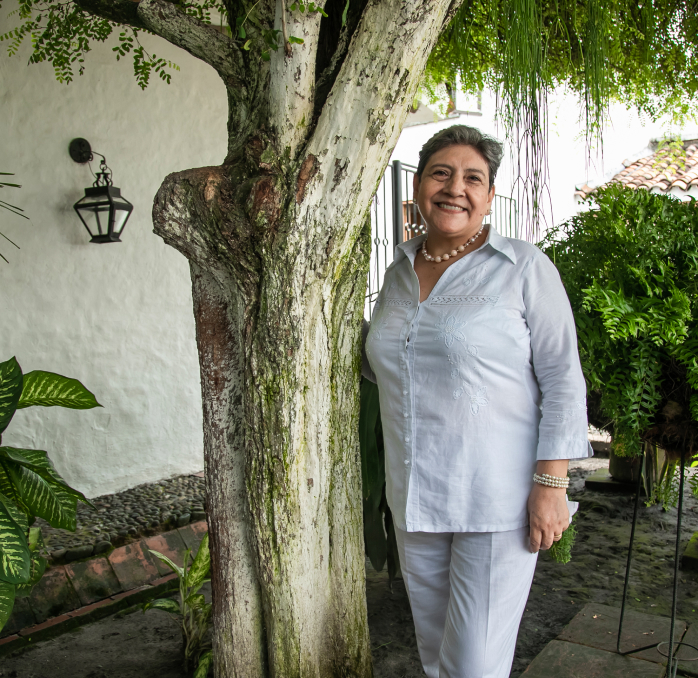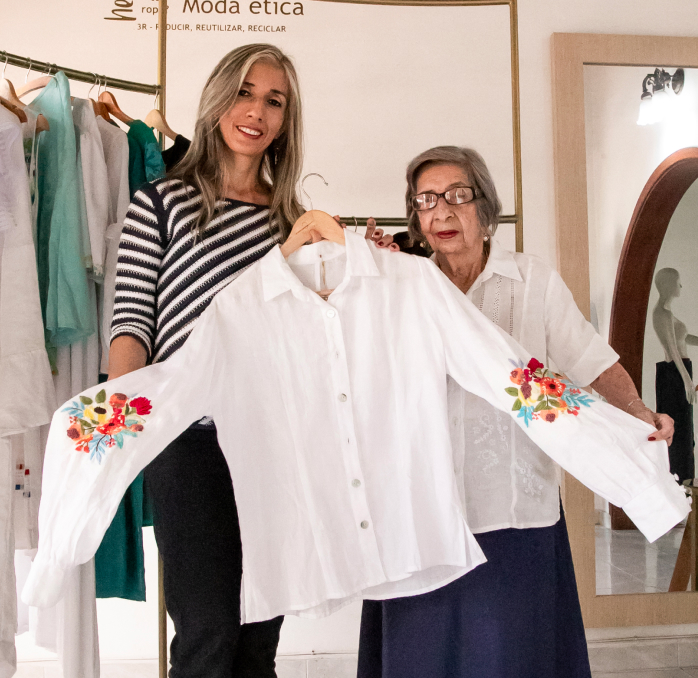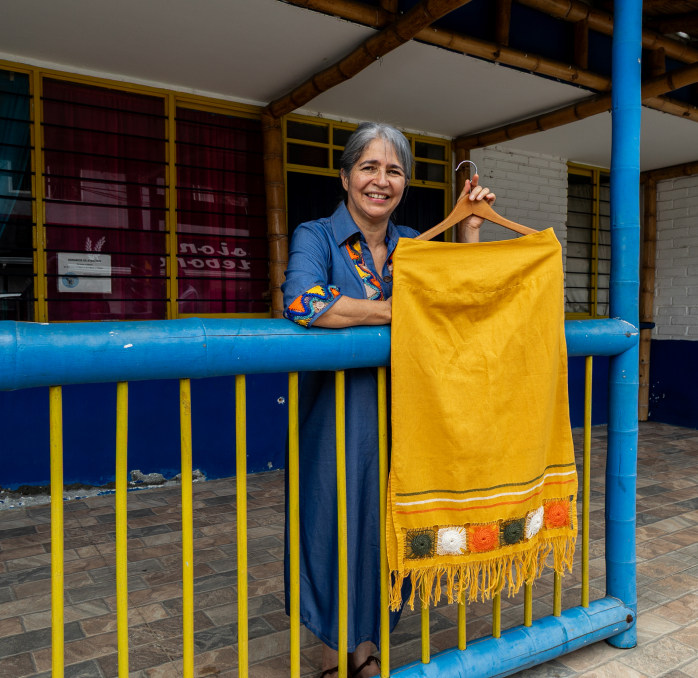Valle del Cauca route
The Valle del Cauca region is crisscrossed by its Afro, indigenous, and Spanish heritage, embraced by the Andes mountain range and the Pacific Ocean. This mix of elevations, ecosystems and ancestries transform this province into a diverse and welcoming department, much like its inhabitants, who are as deep and sweet as their sugarcane fields. And while the rivers flowing from the mountains find their way to the Pacific, the ocean and its people return to the continent the essence of their traditional cuisines and rhythms—a relationship that cannot be underestimated. Not in vain the salsa capital is located here, where rhythms from cargo ships arriving in Buenaventura collide with the swing, mambo, Cuban son, and cha-cha rhythms from Central America. These blended and simmered in the tantalizing heat of this land to give us the songs we listen to and dance to time and time again.
Its range of elevations and ecosystems allow the Valle to harbor five Natural National Parks between forests, waterfalls, and mountains, and to be acclaimed for birdwatching. Its lands provide woods, leathers, clay, and fibers to the artisans along this route, renowned for their diverse crafts. As you travel this route you’ll traverse distinct climates, encountering ceramics, metalwork, leathercraft, woodcarving, lutherie, and weaving in all their forms: from warumá and wérregue to thread embroidery, frivolité, and micro crochet. Along the way, indulge in dishes like arroz atollado, tamal valluno, cholado, sancocho, and aborrajados.
And let’s not forget the festivities of Valle del Cauca! In June, the Andean Music Festival Mono Núñez in Ginebra. August brings the unmissable Petronio Álvarez Pacific Music Festival in Cali, Latin America’s most important Afro culture event, followed by the Salsa World Championship in October. To round off the year, there’s the Cali Fair, from December 25th to 30th.
Embark on a journey full of history

Artisans along the way
Artisans along the way
We recommended this tour
Schedule the visit in advance with the artisans.
Carry cash.
6 days
Car or Bus
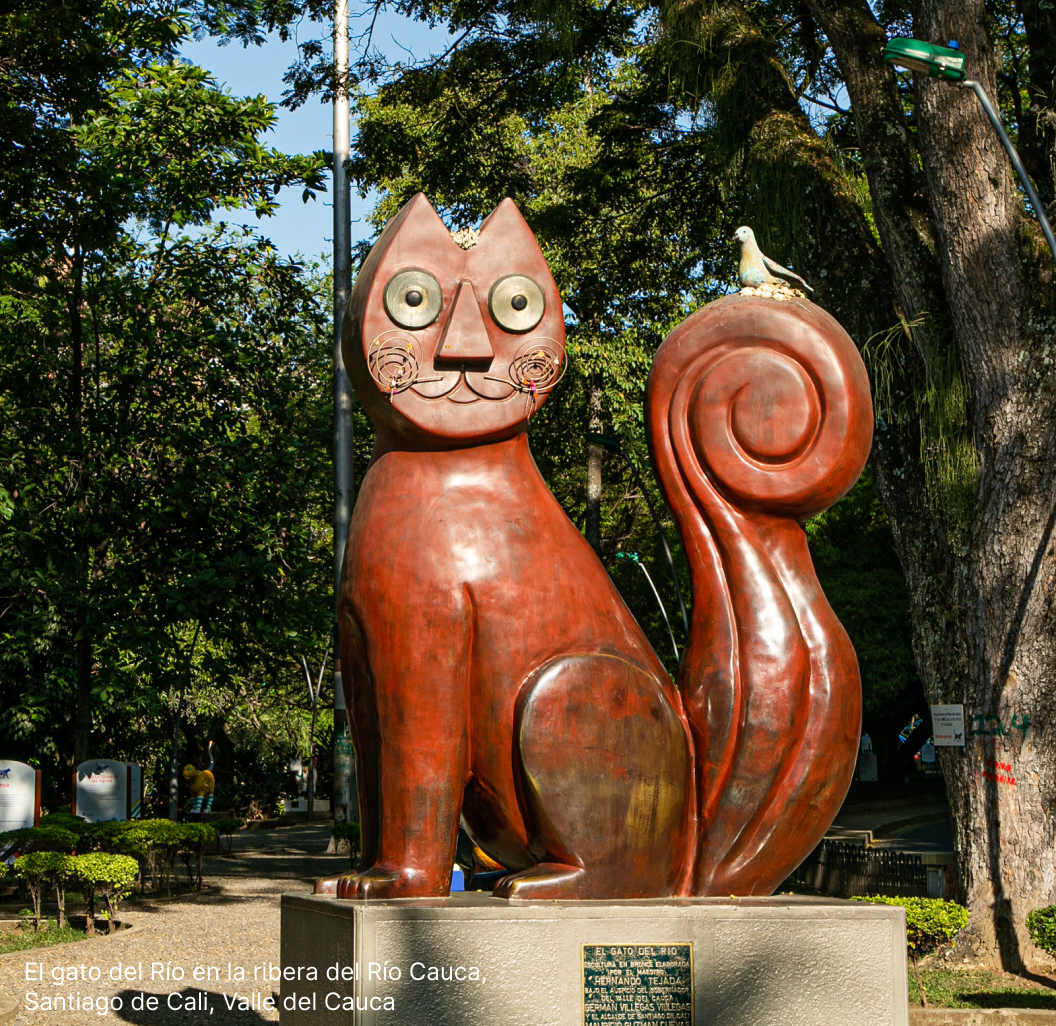
Santiago de Cali
Cali, the salsa capital, is forever in motion. We recommend spending two days here to fully savor its climate and spirit. On the first day, explore the city by foot, starting at Simón Bolívar Park and the gothic-style church La Ermita. Nearby, enjoy chontaduro, a cholado, or champús. Continue along the Boulevard and Cali River’s green corridor, passing by El Gato del Río to reach the traditional San Antonio neighborhood. There, you can visit Rosana Ocaña’s and El Palomar ceramics workshops, and La Linterna lithography studio. Then, move on to the artisanal Loma de la Cruz Park, where the artisans Deira Tomasa Quiñónez, Wilfredo Méndez, Miguelia Chirimía, María Lucila Peña and Eddy Flores await for you. Don’t miss the Katanga Foundation, at the Melendez Neighborhood, where you’ll meet master Addo Possu’s work around musical instruments.
In the evening, dance to salsa or watch a salsa show by Delirio, Ensálsate, or Mulato Cabaret. The next day you can either stay in the city and visit the monument Cristo Rey, La Tertulia and Caliwood museums, the Salsa Museum, or Lugar a Dudas, an art space. Alternatively, relish a Pacific traditional dish in La Alameda Market. For eco-tourism enthusiasts, there is the Farallones de Cali National Natural Park or the Pance River.
Santiago de Cali — La Cumbre
35 kilometers away from Cali lies La Cumbre, a municipality known for its temperate climate and a rich variety of heliconias, anthuriums, and orchids. In Bitaco, you can explore Colombia’s unique tea plantations and pre-Columbian stone petroglyphs. Engage with the Artisanal Group of La Cumbre to delve into the region’s weaving and clay crafts. Spending the night here is a must.
La Cumbre — Buenaventura
Rise early for Buenaventura, 103 kilometers away from La Cumbre, and get ready for a day of seafood and crafts. This is Colombia’s most significant port and was declared a creative city in gastronomy in 2017. Don’t miss out on tasting its signature dishes like a seafood cazuela, encocado, or arroz verde. Here, you’ll find José Nilson Chamarra, a Wounaan fiber artisan, Ali Cuama Valencia, a musician and heir to luthier Baudilio Cuama’s knowledge, and Sandra Garcés, the tireless leader of Fundaproductividad, an initiative working for women’s rights for more than twenty years. These artisans, whose craftsmanship is deeply connected to their territory, will welcome you with their stories and impeccable techniques.
Buenaventura — Guadalajara de Buga
101 kilometers away from Buenaventura you’ll reach Guadalajara de Buga, a pilgrimage site for Our Lord of the Miracles, whose basilica is a must-see. Here, you’ll also find the leather artisan Jerónimo Jaramillo, Daniela Sierra’ s macrame experiences, and the Nature Reserve Laguna del Sonso, with its trails and birds. In Buga, you’ll be thirty minutes away from Ginebra, where you’ll be able to savor a traditional chicken sancocho simmered over wood-fired stoves, and meet the guitarrillos crafted at the luthiery workshop of the Canto por la Vida Foundation. If you visit in June, don´t miss the Mono Núñez Festival of andean colombian music. Spend the night in Buga.

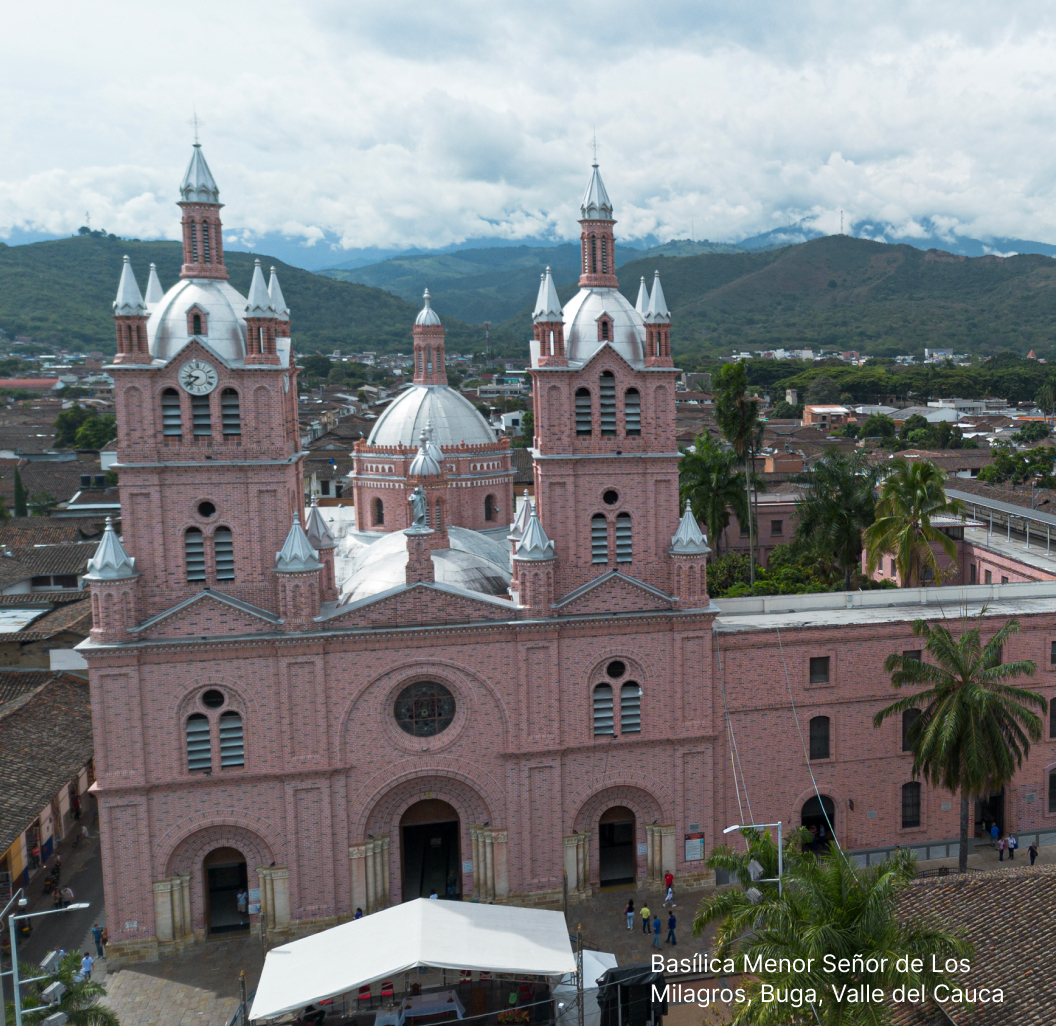
Guadalajara de Buga — Tuluá — Cartago
Heading north, Tuluá awaits just half an hour from Buga, the heart of Valle. Your visit here will be filled with flowers. Start by visiting the Juan María Céspedes Botanical Garden, featuring an array of plants, butterflies, and birds. After having lunch and a glass of corn chicha, visit Carolina Claros, an artisan specialized in frivolité and micro crochet, who creates intricate flowers and leaves best admired through a magnifying glass.
On your way to Cartago, your final stop, 115 kilometers away from Buga, you might want to take a detour through Zarzal and pass by Roldanillo. The latter is famous for its winds and paragliding, kite, and hang gliding competitions.
Cartago — Ansermanuevo
Cartago is the embroidery capital of Colombia and home to the artisans Carmen Julia Alméciga, and Yamile Henao. After experiencing their delicate work, visit the colonial architecture of the Casa del Virrey and Nuestra Señora del Carmen Cathedral, and the embroidered graffitis of the Arenera neighborhood. Then pass by Ansermanuevo, less than half an hour away, to meet Rubiela Grisales’ family workshop .
Conclude your Valle del Cauca journey by exploring the wetlands and birdlife of La Salud Park, and the natural haven of La Isleta Park.
Until we meet again!
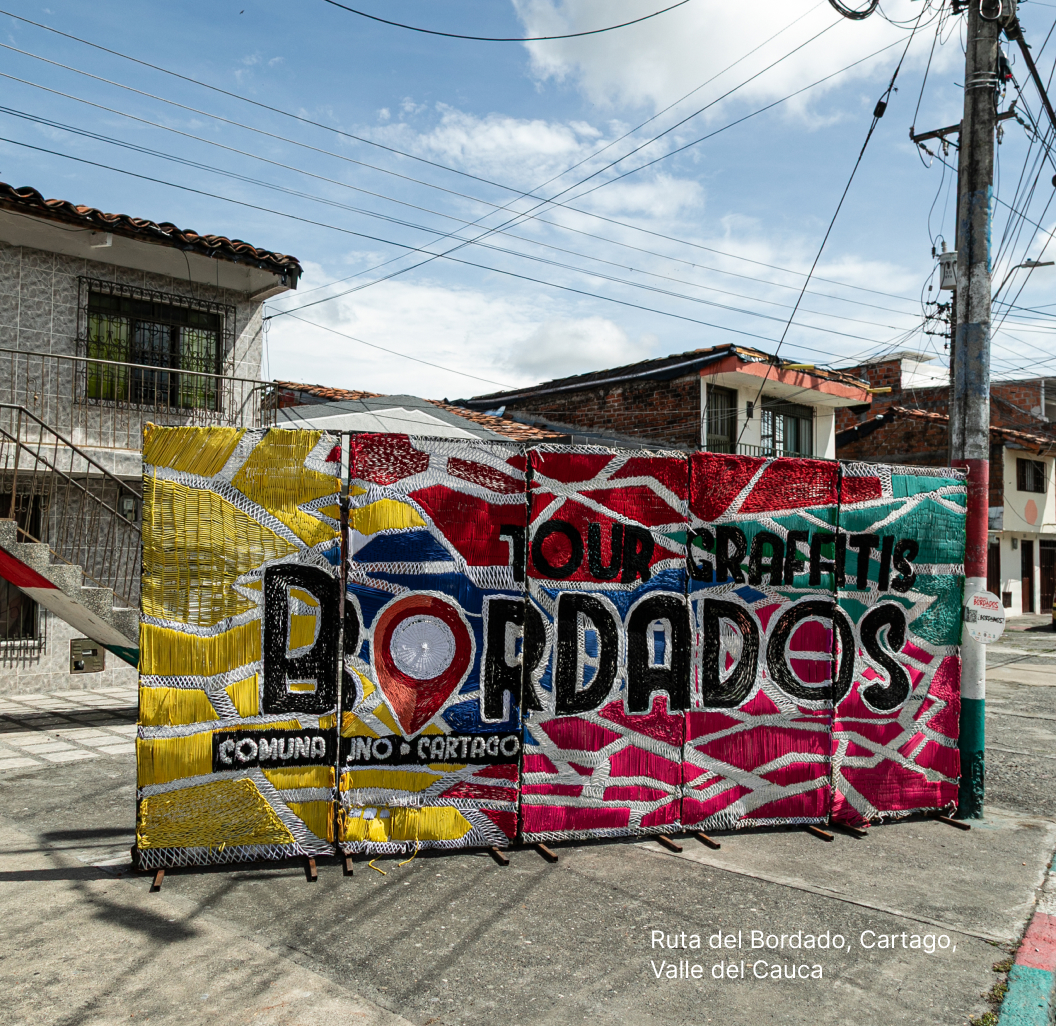
Traditional cuisine
and typical bites
Provoke yourself

Don't leave without eating this 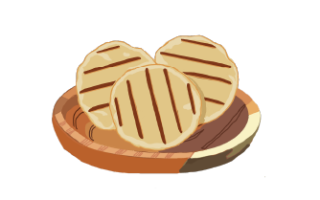
Dentro de lo más representativo encontramos sancochos, atollados de arroz, tamales, champús, fríjoles, aborrajados, marranitas, chuletas, chorizos, pandebonos y frutas como el lulo, el chontaduro, el mango, la badea, el borojó y la grosella hacen parte de la comida de los vallecaucanos, pero de los ingredientes más universales de su cocina son la carne (de vacuno o de cerdo, y el pescado en el litoral), el plátano (en todas las formas posibles de preparación), el arroz, el maíz y el dulce (elaborado a partir del zumo de caña de azúcar). Para el litoral del Pacífico habría que agregar, como un infaltable, el coco.
“La comida del Valle del Cauca es muy variada y rica en todo el sentido de la palabra por sus sabores influenciados por el Pacífico y la población afro, indígena y española.”
To lunch we go 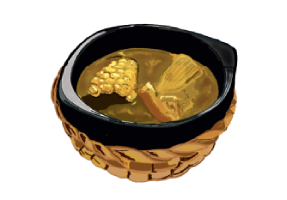
El sancocho de gallina, particularmente en Ginebra, es uno de los platos más representativos de la región. Se trata de una sopa espesa elaborada en estufa de leña a base de gallina o pollo, yuca, plátano, mazorcas de maíz, aliños y hierbas. Es un plato muy reconfortante y se suele servir con arroz blanco. Es un plato ideal para el almuerzo durante el fin de semana cuando los caleños se desplazan a este municipio para almorzar. En Cacerola Cantora que opera la Fundación Canto por la Vida y en el restaurante Patio Valluno puedes degustar este suculento plato.
La chuleta valluna es un plato icónico de la región que consiste en una chuleta de cerdo empanizada y frita, acompañada de arroz, tajadas de plátano maduro, aguacate y ensalada. Es una combinación de sabores y texturas deliciosas. Pruébala en el restaurante Casa Vieja de Cartago.
El arroz atollado: Es un plato tradicional de la región que combina arroz, cerdo, pollo, chorizo, verduras y especias. Se cocina todo junto hasta que el arroz esté bien cocido y se forma una especie de guiso espeso. Es un plato muy sabroso y contundente.
Si quieres probar estos y otros platos deliciosos del Valle del Cauca, puedes visitar algunos de los restaurantes que ofrecen comida típica de la región, como Basilia en la Galería La Alameda, el Restaurante El Zaguán de San Antonio, Restaurante Ringlete, Platillos Voladores en Cali o la Galería Pueblo Nuevo en Buenaventura, el Portón de Meléndez, el Restaurante de La Hacienda El Paraíso, en el Hotel Guadalajara de Buga en Buga.
Tamales vallunos preparados con masa de maíz, pollo, cerdo, huevo cocido, zanahoria, arveja y envueltos en hoja de plátano. En la Galería Alameda en Las Delicias de Ara.
Flavors to discover and snack on 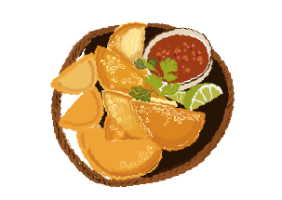
- El pandebono y las empanadas vallunas son productos de panadería muy populares en el Valle del Cauca. El pandebono es un panecillo de queso hecho con harina de yuca y queso fresco, mientras que las empanadas vallunas son empanadas fritas rellenas de carne, papa y especias, importante señalar que no llevan arroz.
- Los aborrajados son una preparación muy popular en el Valle del Cauca. Consisten en un plátano maduro que se aplasta y se rellena con queso, se reboza en harina y se fríe hasta que esté dorado y crujiente. Se sirve normalmente como acompañamiento o como snack.
- Otro imperdible son las marranitas vallunas, un delicioso plato típico. Son unas bolitas de masa de plátano verde rellenas de chicharrón y fritas en aceite, ideales para acompañar con ají, limón y queso salado.
Paso obligado para probar estas delicias en Cali: Fritanga J&J San Antonio.
To sweeten the palate and unmissable drinks 
- El manjar blanco es un postre dulce y cremoso elaborado con leche, azúcar y canela. Se sirve frío y se puede disfrutar solo o acompañado de galletas. Hay que probar el de Cecilia Payán en alguna de sus sedes en Buga o también lo puedes conseguir en supermercados a nivel nacional.
- El dulce de chontaduro se prepara con este fruto típico de la región. Se cocinan en almíbar y se sirven como postre. El dulce desamargado valluno es otro dulce hecho con toronja, naranja agria, limón, papaya verde, papayuela, brevas, panela, clavos de olor y se hace en la época decembrina.
- También su muy reconocidos los cholados, un postre refrescante y nutritivo. Es una especie de ensalada de frutas que combina frutas picadas, hielo raspado, jarabe de frutas y leche condensada. Se pueden encontrar en puestos callejeros o en locales especializados, donde se ofrecen diferentes sabores y combinaciones. Algunas de las frutas más usadas son la papaya, el mango, la piña, la fresa, el banano y el lulo. El jarabe de frutas puede ser de mora, maracuyá, guanábana o cualquier otra fruta tropical. La leche condensada le da un toque dulce y cremoso al postre, que se puede decorar con coco rallado, queso o crema de leche. Los cholados vallunos son una opción ideal para disfrutar en un día caluroso, o para compartir con la familia y los amigos. Todos muy reconocidos en el Valle, pero merecen especial atención los de Cartago. No dejes de probar los Helados Ventolini que tienen una trayectoria de más de 65 años en el mercado con una oferta de sabores clásicos y otros nuevos como el de dulce de leche.
- Las Macetas son una tradición dulce del Valle del Cauca. Es una golosina que elaboran con agua y azúcar llamada alfeñique y van ensartados en palitos y estos a su vez en un soporte de madera junto con alegres papelitos de colores. Es una expresión de amor de los padrinos a sus ahijados especialmente durante el festival de Macetas que se celebra cada año en el mes de junio durante las fiestas de San Pedro y San Pablo y con la maceta que reiteran su compromiso de educarlos en la fe cristiana. Julieth Páramo continúa la herencia de su mamá y tienen en Macetas de Cali una oferta de talleres y macetas a disposición de todos.
- El champús es una bebida tradicional del Valle del Cauca, especialmente popular en la época navideña y durante las fiestas. Está hecha a base de maíz fermentado, panela (azúcar morena), frutas como piña y lulo, y especias. Es una bebida dulce, potente y refrescante. Acompaña muy bien los pandebonos y las empanadas.
- La lulada es una bebida tradicional de la gastronomía del Valle del Cauca, su origen es de la ciudad de Cali. Se diferencia del jugo de lulo porque no se licúa ni se cuela, sino que se macera o trocea la pulpa de la fruta con la mano para mezclarla con jugo de limón y batirla con un molinillo antes de servir con hielo y azúcar al gusto. Algunas variaciones no tradicionales incorporan leche condensada o licores como el vodka o el aguardiente e incluso el viche. También se diferencia del champús, otra bebida típica que tiene al lulo entre sus ingredientes, por no tener maíz o especias en su preparación.
- El viche o biche del Pacífico es una bebida alcohólica que se consume desde hace siglos en los departamentos de Chocó, Valle del Cauca, Cauca y Nariño. Su origen se remonta a la época precolombina, cuando los indígenas utilizaban un alambique de barro para extraer el licor de la caña. El viche tiene un sabor fuerte y dulce, y se puede tomar solo o mezclado con jugos de frutas tropicales. Más que una bebida, es una expresión cultural de las comunidades afrodescendientes e indígenas que habitan la región Pacífica. Hace parte de las fiestas, los rituales, las celebraciones y la vida cotidiana de estas comunidades, que lo consideran un patrimonio ancestral. El viche también tiene propiedades medicinales, ya que se usa para aliviar el dolor, el frío, la tos y otras dolencias. Es una bebida que hay que conocer y respetar, porque es parte del legado de nuestros antepasados. Así que ya sabes, si quieres vivir una experiencia única y auténtica, no dudes en probar el viche del Pacífico. El festival Petronio Álvarez, que se celebra en Cali todos los años en el mes de agosto, es un escenario propicio para degustar esta bebida y probar la gastronomía del Pacífico. Fundaproductividad, en Buenaventura, con Sandra Garcés ofrece una experiencia con estas bebidas tradicionales e incluso bocados para una experiencia completa.
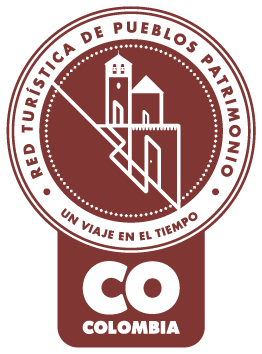
Pueblo Patrimonio
La Red Turística de Pueblos Patrimonio de Colombia es un programa especial del Ministerio de Comercio, Industria y Turismo, ejecutado por FONTUR, que trabaja con 17 municipios de Colombia que poseen declaratoria de Bien de Interés Cultural (BIC) a nivel nacional para su valoración y proyección mediante el turismo, generando así más oportunidades de desarrollo y sostenibilidad en las comunidades.

La Medalla a la Maestría Artesanal es un galardón que Artesanías de Colombia entrega anualmente, con el cual se hace un reconocimiento a aquellos artesanos, empresas y comunidades artesanales que, contando con una trayectoria destacada, sobresalen a nivel nacional por su excelencia en el oficio así como por preservar el quehacer artesanal.

Denominación de Origen
Es un signo distintivo que identifica productos reconocidos o famosos por tener una calidad o características específicas derivadas esencialmente del lugar de origen y la forma tradicional de extracción, elaboración y producción por parte de sus habitantes. La protección conferida sobre una Denominación de Origen implica que ninguna persona puede identificar con la denominación protegida productos iguales o similares a los amparados, cuando no provengan del verdadero lugar y no cumplan con las características o calidades que le han dado la reputación al producto reconocido. Las Denominaciones de Origen para productos artesanales colombianos que han sido protegidas por la Superintendencia de Industria y Comercio en nuestro país son actualmente 12.
No puede copiar contenido de esta página








































